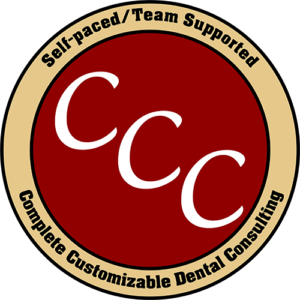A well trained insurance administrator and treatment coordinator are very valuable members of the dental team. They can usually assist the Dr. with increasing monthly production by several hundred to several thousand dollars. Just think of what that would do for your practice!
Only the Dr. can diagnose and treatment plan. However, once the treatment plan is complete, the Insurance Administrator can add valuable insight in respect to sequencing and timing of specific treatments. The key is open communication between Dr. and team. What I am saying, is, that by making a few little adjustments and using the correct code, you can get legitimate reimbursement for the procedures that you already perform.
Patients are always looking to stretch their dollars. It is important that the patient has an experience that exceeds their expectations and has a greater perceived value of your services than they would have at another office. Dentists have no control over most of their overhead. However, they do have control over their perceived value.
Clear communication with the patient is essential to the success of the practice. Not only should team members be able to effectively speak to a patient, they must also hear what the patient has to say. Most patients are less concerned with the type of treatment needed, and more concerned about out of pocket expense, time off work, etc.
The team must be able to address the patient’s concerns in calm, understanding manor. There is a difference between listening and hearing. You must learn to listen to what your patient is (or is not) telling you.
Seating a patient on time, having a caring, well trained and knowledgeable team, explaining the patient’s benefits to them , educating the patient on their treatment plan, having simple financial policies , and building relationships, are a few things that patient’s place a high value on. By exceeding a patient’s expectations you will build a base of desirable patients, you will have fewer missed appointments, better case acceptance and your practice will benefit. Your patients will feel respected and appreciated, and will be happy. They become loyal to your office and will refer their family and friends.
It has been my experience over the last 30 years of working in and with dental offices that the ones that take the time to review the patient’s charts, use route slips properly, and have an informative morning huddle are more successful than those who don’t. It is not productive to gather around and just read the schedule.
It is easy to have tunnel vision & only deal with what the patient is coming in for that day, but when we do that, we miss some significant items. The biggest culprit of lost opportunities to provide optimal care is the morning huddle. There are important questions to answer…. Does the patient have undone treatment? Did they see the specialist that you referred them to? When was their last complete exam, perio evaluation and diagnostics? Did they express an interest in teeth whitening that was never followed up on? Do we have a patient on today’s schedule with special needs that will require the use of a specific operatory or wants only a certain assistant? Does this patient require antibiotic premed and have they been reminded to take it? Will you run out of instruments if you have back to back procedures? Does this patient only come in when they have a toothache? Is there a balance we need to collect before the patient is seated? By taking the time to prepare your charts for the next day and discuss the day’s schedule, you will be more productive, better prepared and less stressed. You lose credibility when you appear unorganized.
Nothing is worse than having a patient stand at the counter after treatment is done and says they “didn’t know they had to pay today” or “I don’t have my wallet, can you bill me?” Would they go to the grocery store, a restaurant, hairdresser, etc. without expecting to pay? Could you image asking your car repair shop if they can bill you?
Patients are less receptive to accepting large treatment plans because of the out of pocket costs. It’s not that they don’t understand or disagree with the presentation; it’s that they are usually budgeting their dollars very carefully. Most patients can’t write a check for $1000.00, but they could probably afford $30.00 per month.
This is where your Financial Administrator or Office Manager helps the patient find a payment plan that fits their budget. Most offices have a variety of long term payment options available for those patient’s that need to stretch out their financial obligation. These can include obtaining an authorization from the patient to do a monthly auto draw on the date that the patient helps determine, from the account of their choice.
Positive changes like this start off small & must start with the Dr. taking the lead. It can take some time to get everyone on the same page, and there are always tough choices, but in the end, you will have a much smoother running office, as well as a more profitable one.
